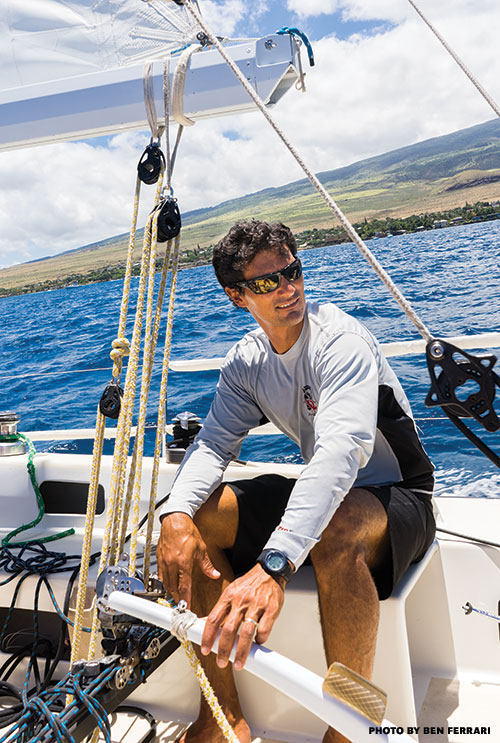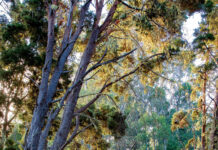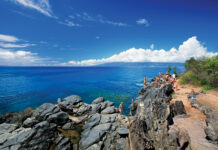
After the miniature weather lesson, we practice knots like our bowline and clove hitch and talk about when to use which. We prep the lines to jibe the boat, and once we’re headed back to the harbor, we all relax and enjoy the peace of simply being at sea.
After our four-hour lesson, we’re lighter, airier, and much more refreshed than when we first stepped on the boat.
“I feel like I just had a massage,” says Heather as we pull into the slip. It’s a surprising response to a pretty strenuous activity. Pulling the lines and manning the tiller can be exhausting, but the joy of sailing is also invigorating.
For Keahi Ho, it doesn’t feel like work; he’s doing something he loves. As for why he named his vessel Gung Ho, he says it’s a play on his last name.
“And that’s kind of how we sail it,” he says.
I’d have to say I agree.
GUNG HO offers three-day sailing lessons for groups of up to six people. The boat has a refrigerator and dry storage, and you can opt to bring beer and other beverages, snacks, and extras like sailing gloves and sunscreen. For reservations, call 808-269-5261 or visit GungHoSailing.com.
A LANDLUBBER’S BRIEF GUIDE TO NAUTICAL TERMS
- Batten: A long, thin strip that supports the mainsail
- Boom: A horizontal pole that’s attached to the mainsail and extends from the bottom of the mast
- Boom Vang: A line that exerts downward force on the boom to adjust the twist of the mainsail
- Bow Line: A line that runs from the bow of the boat and secures it to a dock
- Bowline: A knot that’s commonly used while sailing, particularly when tying sheet lines to sails
- Close Hauled: Pointing a boat about 45° in the direction the wind is blowing.
- Clove Hitch: A knot that’s commonly used to tie the fenders onto the railing
- Fairleads: A device that’s used to guide a line and keep it free from chafing
- Fender: A flexible bumper that keeps boats from banging into the dock or each other
- Heel: Tip and sail at an angle
- Jibe: Change course by turning the stern, or the back of the boat, through the wind
- Keel: The bottom of a boat, which is heavily weighted to prevent the boat from capsizing
- Lee: An area that’s sheltered from wind Line: The term for most cordage or ropes used on a vessel
- Tell-tales: Pieces of string attached to a sail to indicate wind direction
- Tiller: A lever, attached to the top of the rudder post, used for steering on smaller boats
- Trim: The shape of the sail. To trim the sail is to adjust the sail and make the boat move more efficiently.





